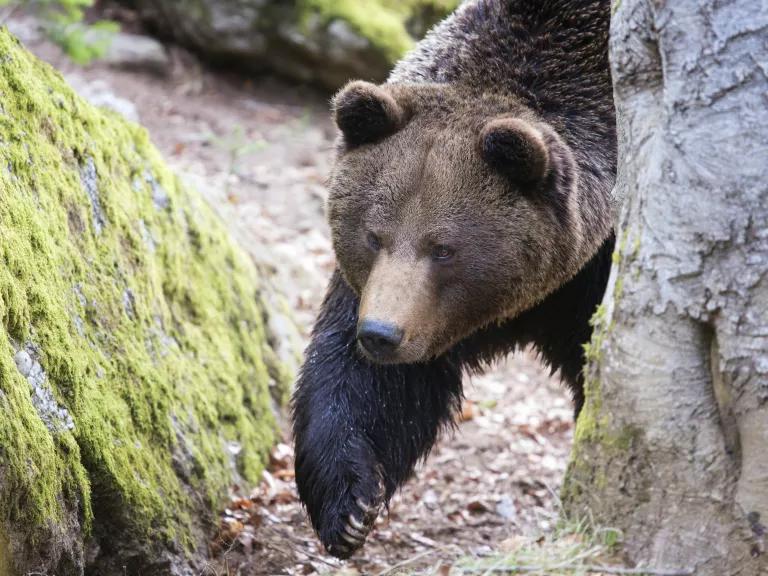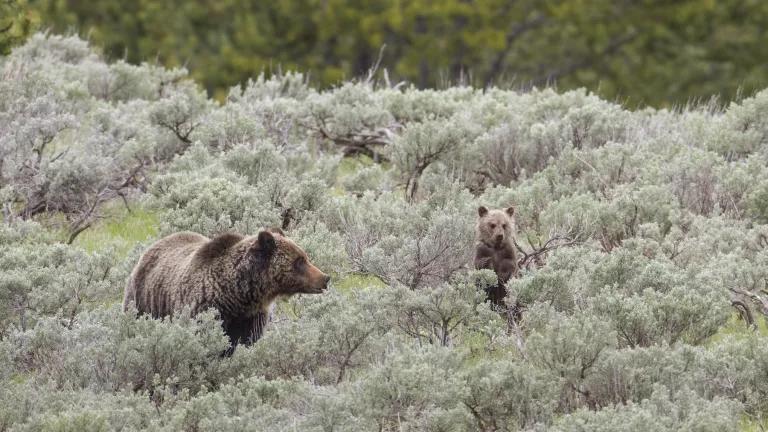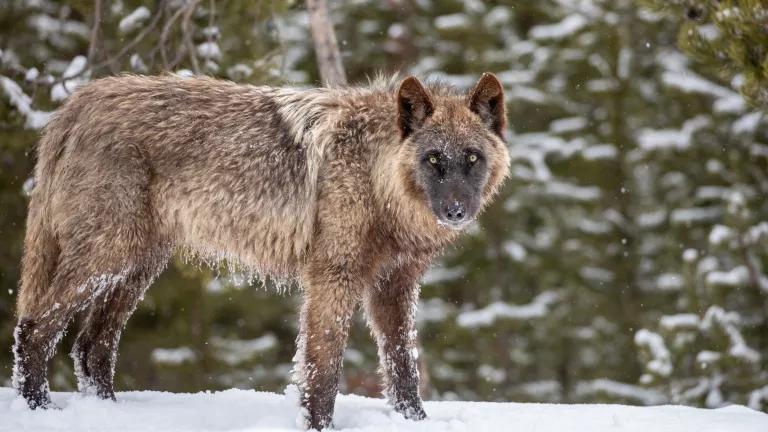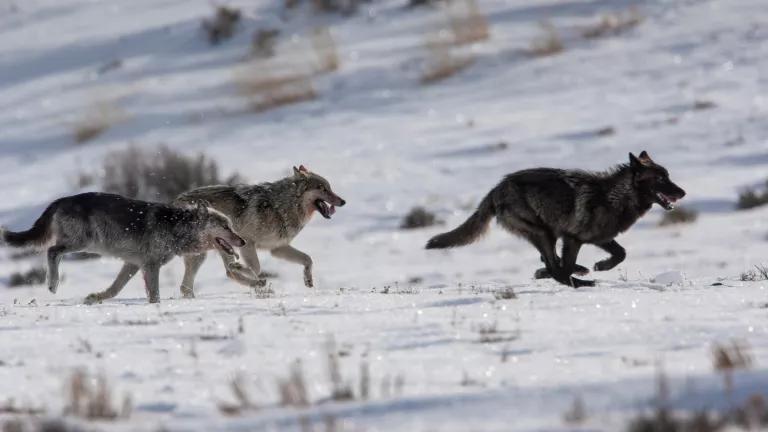
Map showing the Greater Yellowstone Area grizzly bear "Distinct Population Segment" (blue exterior line). Grizzlies within this boundary have been delisted and could now be hunted (outside Yellowstone and Grand Teton National Parks).
Montana Fish, Wildlife & Parks (FWP) has decided not to hold a Yellowstone-area grizzly bear hunting season this year. This is welcome news and makes a lot of sense. We applaud the agency’s decision and want to do everything we can to work together to avoid any need (or excuse) for a grizzly hunting season in the future.
Last year, the U.S. Fish and Wildlife Service (FWS) “delisted” grizzlies in the Greater Yellowstone Ecosystem—an area that includes portions of southwestern Montana, northwestern Wyoming, and northeastern Idaho. This means that in those areas, Endangered Species Act protections for grizzly bears have been removed and the states could now hold limited hunting seasons.
Wyoming plans to move forward with a grizzly hunting season this year. Idaho will likely discuss the issue during its Fish and Game Commission meeting next month. We are encouraged that, in the meantime, Montana has shown restraint and decided not to hold a hunt in 2018.
In her comments recommending against a hunt this year, FWP Director Martha Williams emphasized focusing on managing grizzly bears for long-term recovery and conflict prevention. She explained that FWP will be “continuing to work hard at responding proactively to bear conflicts and educating people and communities in grizzly country how to be bear aware.”
Indeed, FWP’s wildlife specialists have long worked with communities like Missoula to prevent human-bear conflicts. And the agency's website has a veritable library of practical advice about living with bears, such as how to recreate safely in bear country, avoid bear attractants, and use bear spray.

Example of electric wire installed by the Blackfoot Challenge to secure garbage in a solid waste transfer station from grizzly bears in Montana's Blackfoot Valley.
This is critically important work for bears and humans alike. Emphasizing conflict prevention is the exact direction that grizzly bear management in Montana should continue to take, whether grizzlies are protected under the Endangered Species Act or not. In recent years, NRDC has collaborated with ranchers, conservation colleagues, and state and federal wildlife managers—including FWP—to reduce conflicts with large carnivores like grizzlies. We look forward to supporting and partnering with FWP in the coming years to do even more.
In the meantime, FWP’s decision not to hunt grizzlies makes sense for multiple reasons. After more than 40 years on the list of threatened and endangered species, Yellowstone-area grizzlies were removed less than a year ago. The population remains completely isolated from any other grizzly bear population. It also remains too small to ensure long-term genetic health. Rather than killing these bears as soon as we can, we should stay focused on helping them further recover.
In addition, litigation over FWS’s grizzly delisting rule is ongoing. Shortly after the final rule was published, a federal appellate court rejected an identical approach taken by FWS to delist Western Great Lakes wolves. As we’ve told the agency, this means FWS—as the Court required it to do with Great Lakes wolves—should rescind its grizzly delisting rule, start over with any proposal to delist Yellowstone grizzlies, and re-list the bears in the meantime. Until these legal challenges and shortcomings are resolved, it makes little sense to even consider a hunt.
Grizzly bears are Montana’s state animal. They are the emblem of our wildlife management agency. They are one of the reasons I feel so proud and fortunate to have grown up in this state—and so humble when I head into its mountains. We don’t need to hunt these magnificent creatures. Instead, by working together and being proactive, we can figure out how to protect property and keep livestock, and ourselves, safe in grizzly country. We can figure out how to reconnect Yellowstone-area bears with their nearest neighbors to the northwest. It will take work. But as Director Williams herself has reflected, “the honor of living in one of the few remaining states with healthy grizzly populations makes that effort more than worthwhile.”

This blog provides general information, not legal advice. If you need legal help, please consult a lawyer in your state.



